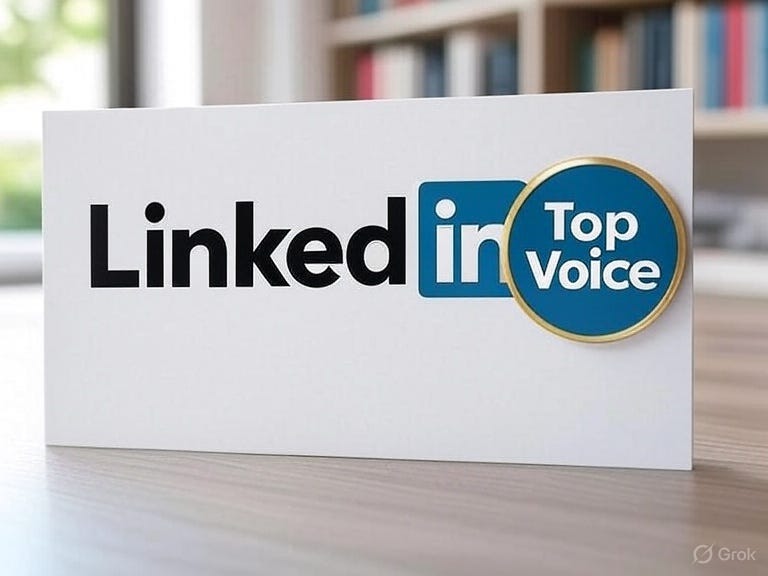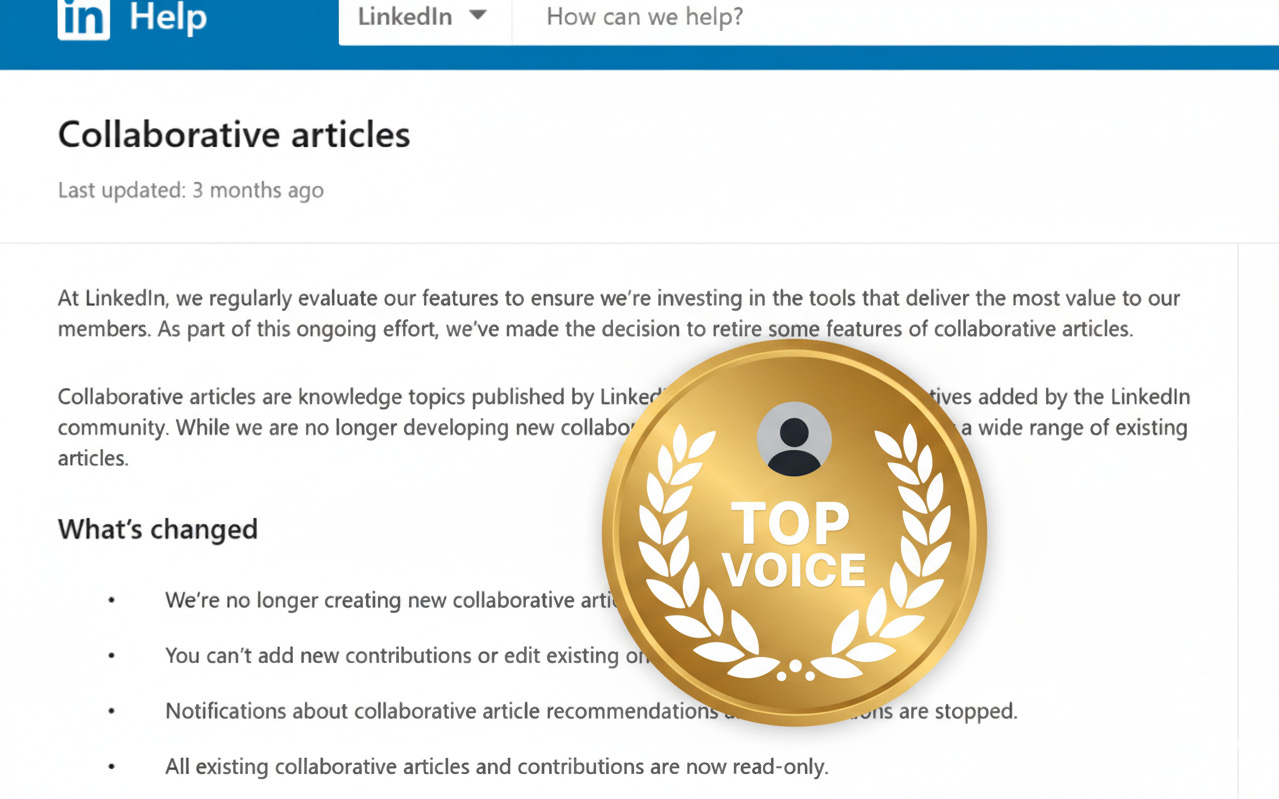Human Lessons from LinkedIn's Collaborative Articles
Initially announced as a big move, promoting content and professionals, the collaborative article has been retired. More than just a platform update, this is an evolution of AI human collaboration
LinkedIn has quietly shuttered a significant experiment in AI-human content creation. The official interruption of “collaborative articles” has been pronounced. The existing library of articles remains accessible, and so are the articles.
Initially announced as a big move, promoting content and professionalism, the collaborative article has been retired. More than just a platform update, this case study highlights the evolving role of human supervision over AI, the critical necessity of product-market fit, and the future of content in an increasingly automated world.
Launched with the promise of combining AI efficiency with human expertise, the feature used artificial intelligence to generate articles and topic questions. It then relied on LinkedIn’s network of professionals to add insights, refine the content, and lend it credibility. In return for their efforts, top contributors were awarded a “Community Top Voice” badge, a digital kudos for their intellectual labor.
This model represented a necessary, albeit temporary, phase in our relationship with AI: the “human engaged” system. Early-generation AI often lacked the nuance, contextual awareness, and authentic voice necessary to produce a decent article. The framework designed the Human contribution as a necessary input to elevate the machine’s output. It addressed both the technical limitations of the tool and LinkedIn’s motto. Professionals were tasked with being the ghost in the machine, breathing life and experience into an automated skeleton. However, the final product still gave me a feeling of being a patchwork.
However, reliance on human oversight is increasingly becoming unnecessary. Large language models are advancing rapidly, and as AI evolves, their capabilities in drafting, editing, and creating content are increasingly surpassing those of an average human writer. Needs for basic quality control and adding generic insights are fading.
The game has changed. AI has become the new factory floor for content production. It’s already churning out coherent, well-structured drafts at a scale no team of junior writers ever could. The mass-supervision model, endless cycles of proofreading and basic editing, is dead. Wasting our best people on it is a strategic malpractice.
Human experts need to be pulled entirely from the factory floor. Their new role is in the C-suite of content, where they set high-level strategy, curate the absolute best of what the machine produces, and inject the kind of unique, hard-won knowledge that only comes from experience.
Let the machine handle the bulk. Our job is to provide the “genius”.
Ultimately, the downfall of the collaborative articles was not just about the changing dynamics of AI. The feature failed to answer a client’s need. Therefore, it did not generate the expected traction. Professionals on LinkedIn seek genuine connection and authentic thought leadership, content born from personal experience, not from an AI prompt. The platform’s most engaging posts are often personal feedback, stories, and hard-won lessons, not a patchwork of expert ideas.
The AI-generated articles were a good try to increase activity on LinkedIn. But in fact, those were a solution in search of a problem. Users weren’t asking for AI-drafted summaries of professional topics. The low engagement and lack of widespread adoption were signals that the format did not resonate.
LinkedIn’s quiet retreat from this initiative offers several lessons. The successful implementation of AI is never just about technological capability, but also about purpose and value. While the need for human supervision over AI content is waning, the demand for genuine expertise remains as strong as ever.
The future of content creation will not be a battle between humans and AI, but a more sophisticated integration where AI handles the groundwork, freeing human experts to focus on what they do best...
What is it? Think encore!


